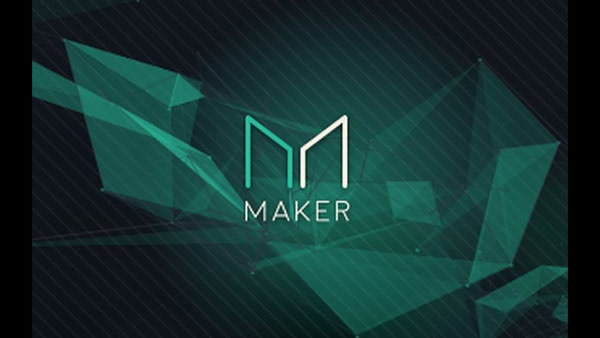
The Maker Protocol, also known as the Multi-Collateral Dai (MCD) system, allows users to generate Dai using assets approved by “Maker Governance” as collateral. Maker governance is a set of processes organized and operated by the community that governs all aspects of the Maker protocol. Dai is an asset-backed cryptocurrency soft-pegged to the U.S. dollar, and its issuance is decentralized and non-discriminatory. Due to its low volatility, Dai is resistant to hyperinflation and provides economic freedom and opportunity to any individual on a global scale.
About MakerDAO
MakerDAO is an open source decentralized autonomous organization created in 2014 on the Ethereum blockchain. The project issues a governance token called MKR, and anyone who holds the token worldwide can participate in project governance. Through a scientific governance system consisting of Executive Voting and Governance Polling, MKR holders can manage the financial risks of the Maker protocol and Dai, thereby ensuring the stability, transparency and efficiency of the protocol. The MKR voting weight is proportional to the number of MKR stored in the voting contract DSChief. In other words, the more MKR tokens a voter has locked in the DSChief contract, the more decision-making power they have.
About the Maker Protocol
The Maker protocol is built on the Ethereum blockchain and allows users to create currencies. The protocol currently consists of the stable currency Dai, the Maker Collateral Vault (Maker Collateral Vault), the information input system (Oracle, formerly translated as "oracle") and the voting mechanism. MakerDAO relies on the votes of MKR holders to determine key parameters (e.g., stability rate, collateral type/staking ratio, etc.) to govern the Maker protocol.
The Maker Protocol is one of the largest decentralized applications (dApps) on the Ethereum blockchain and the first decentralized finance (DeFi) application to achieve mass adoption.
About the Maker Foundation
The Maker Foundation is part of the global Maker community and works with many external partners to create the Maker Protocol. The Maker Foundation works with the MakerDAO community to guide the decentralized governance of the MakerDAO project and promote its complete decentralization.
About the Dai Foundation: The Dai Foundation is an autonomous organization located in Denmark, independent of the Maker Foundation. The Dai Foundation is responsible for managing the Maker community’s important intangible assets, such as trademarks and code copyrights, and operates under strict regulations that define its authority. As stated in the Dai Foundation's proxy statement, the purpose of the foundation is to protect the parts of the Maker protocol that cannot be decentralized through technology.
introduction
Starting in 2015, MakerDAO started the first iteration of code, architecture and documentation with developers from around the world. In December 2017, MakerDAO released the first official white paper, introducing the original Dai (now Sai) stablecoin system.
The white paper introduces a system for pledging Ethereum (ETH) to generate Dai through a unique smart contract called Collateralized Debt Position (CDP). Given that Ether is the only collateral asset accepted by the system, the generated Dai is called Single-Collateral DAI (SCD), now also known as Sai. The white paper also mentions plans to upgrade the system to support multiple collateral assets, including Ethereum. The plan was implemented in November 2019.
The Dai stablecoin system, now called the Maker protocol, currently accepts all assets based on Ethereum and approved by MKR holders as collateral. MKR holders also have the right to vote to determine the risk parameter of each collateral (Risk Parameter) . The voting mechanism is a key part of Maker’s decentralized governance process.
Multi-Collateral Dai (MCD)
Blockchain technology offers unprecedented opportunities to address public dissatisfaction and distrust of dysfunctional centralized financial systems. By distributing data across a computer network, the technology can provide transparency to every member of any group without the control of a central entity, resulting in a permissionless system that is unbiased, transparent and efficient - Improve the current global financial and monetary structure to better serve the public interest.
Bitcoin was created for this. Although Bitcoin is a successful cryptocurrency in many ways, it is not an ideal medium of exchange because its supply is fixed and its speculative nature creates price fluctuations that make it It cannot develop further into a mainstream currency.
On the other hand, Bitcoin’s shortcomings are precisely the Dai stablecoin’s strength, precisely because it is designed to minimize price volatility. Dai is a decentralized and neutral asset-backed cryptocurrency with a price softly pegged to the U.S. dollar. Stability is what Dai is about.
Since Single Collateral Dai was launched in 2017, user acceptance has continued to increase and it has become the cornerstone of decentralized finance dApps. Dai's success is also part of a movement across the stablecoin industry, which are cryptocurrencies designed to maintain price and monetary functionality.
For example, in February 2019, JPMorgan became the first U.S. bank to create and test a digital currency pegged to the U.S. dollar. As the digital currency industry grows, some banks, financial services companies, and even governments want to create stable digital currencies (e.g., central bank digital currencies), as do large companies in the non-financial sector. For example, Facebook announced its Libra (a stable digital currency backed by equal amounts of physical assets) plan in June 2019. However, such proposals go against the core value proposition of blockchain technology: to build a public infrastructure that is not influenced by centralized authorities or managers and to adopt it on a global scale.